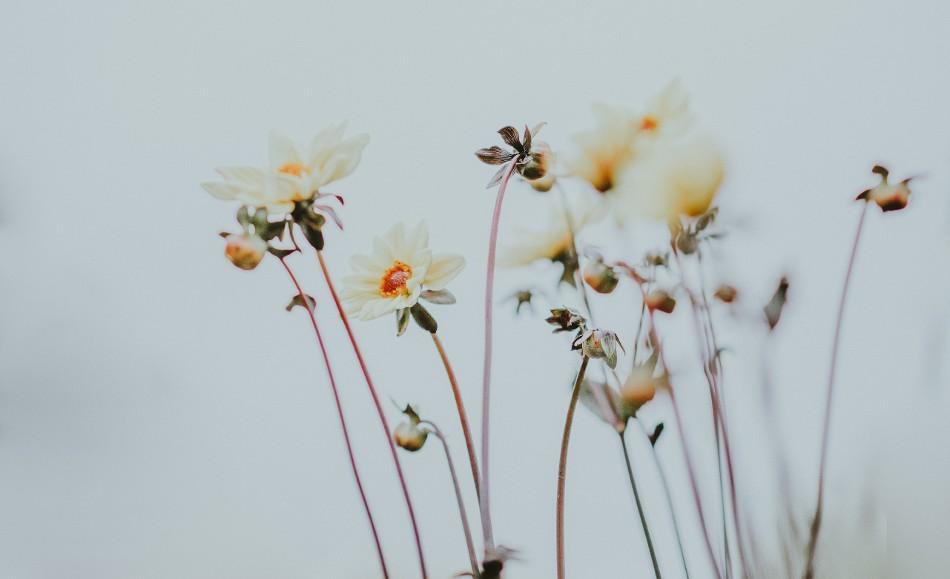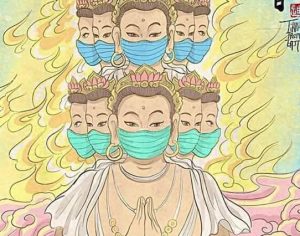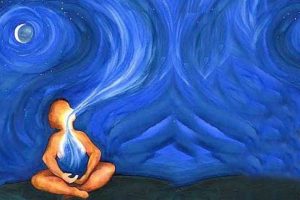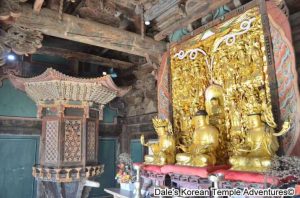
In my previous tradition, we used to recite a prayer,* which named many Buddhist teachers from the time of Shakyamuni Buddha up to the present day. Each section began with the words “I open my heart to you” and was followed by a number of guiding lights from various schools of Buddhist thought: the Sarvastivada, the Avatamsaka, the Lotus lineage, and many more. I was very fond of it. And as I recited the long list of names, I conjured their energy, their wisdom, and their great love. I did indeed open my heart to all these precious teachers, and I received blessings in return.
One section listed a dozen of Shakyamuni Buddha’s disciples, with each name followed by their most treasured quality:
“I open my heart to you, foremost disciples:
Sujata, foremost in kindness,
Upali, foremost in vinaya,
Ambapali, foremost in understanding impermanence,
Anuruddha, foremost in vision,
Sona, foremost in practice,
Anathapindika, foremost in generosity . . .”
I was drawn to this passage and I returned to it again and again. It chimed with the stories that my teacher at the time, David Brazier, would tell. He said that one of the signs of a good teacher was that their disciples had distinct personalities and that they each had their own particular talents. He said that as Shakyamuni Buddha’s disciples spent time with him, they grew more and more into their uniqueness. He said that when disciples seem to be carbon copies of each other, then we should be worried about what the teacher is teaching.
I think that these stories were important to me because I had spent so many decades trying to change myself into someone else. As a child, I learned to mold myself to the wishes of those around me. If I was praised when I was clever, then I would be more clever. If I was chided when I was late, then I would make sure I was always on time. If it was too much for those around me when I expressed my emotions, then I would find ways of modulating them and presenting only the “right” emotions in the right intensities. I was good at it and I still am. As well as the people around me, I took my cues from society: this is how you should be successful; this is how you should be productive; this is how you should be compliant.
These stories about the Buddha’s disciples remind me that we are all different, and that this is a good thing. We don’t complain about a daisy because it isn’t bigger or a different color. We don’t want our sunflowers to be blue, or our bluebells to be yellow. We appreciate each flower in its uniqueness, and we enjoy those which most embody their own qualities: the modest daisy; the tall golden-fringed sunflower; the thick carpet of luminous bluebells in the woods.
Many years later, the teachings of Rev. Gyomay Kubose mirrored these teachings for me. He also encourages us to become “more ourselves.” In his book The Center Within (Heian International Publishing 2009), he says that we should “look within and find oneself and be oneself.” In his book Everyday Suchness: Buddhist Essays on Everyday Living (Heian International Publishing 2004), he says, “Modern man has too many masks to wear. We must unmask and be ourselves, sincerely, earnestly, and live truly as we are,” and “May we be free of the tyranny of our expectations of others.”
As Buddhists, we must set this advice within the context of impermanence. My body and my personality are ever-changing and will continue to change until I die. I shouldn’t cling to my identity as if it will save me, or prop me up, or bring me security or riches or anything else. I know from experience that this doesn’t work, and I also know that it’s impossible anyway.
I can, however, be realistic about who I am right now—the kind of person that my particular causes and conditions have created. I know myself better now than I used to. I am more able to be realistic about my flaws and my limitations, and more likely to be proud of my good qualities. This helps me to be of more use to the world. I don’t waste my time on tasks that are better suited to someone else (except when no-one else wants to do them and they need to be done!). Instead, I say yes to the projects that excite me, and at which I know I’ll be good. These days I try to resist the projects that might bring me more money or praise or fame, unless they are also right for me.
In this season of my life I am called to write, to have kind and honest conversations with my psychotherapy clients, and to help develop our ministry trainees here in the Bright Earth community. I am Satya, foremost in telling the truth, and not foremost in all those other things at which I’d love to be good. That feels okay.
Over the past year or so I have pulled away from activism in order to focus on these other tasks. I have felt some guilt about this, as I know that we need activists at this point in our history, maybe more than at any other time. I sometimes wish that I was doing what many of my friends and colleagues are doing: carrying out non-violent disobedience in order to speak up for dear Earth, and going in and out of courtrooms and in and out of jail.
In the moment at least, I’m not that person. I recently came across this paragraph in Cole Arthur Riley’s beautiful book This Here Flesh: Spirituality, Liberation and the Stories That Make Us (Convergent Books 2022):
For quite some time, the only portraits of activism I had were Dr. King and Malcolm X. Marches, rallies, sit-ins – holy embodiments that should be respected deeply, for they protect and guide us today. But the first time I picked up James Baldwin, I finally saw myself. It occurred to me that I could be an activist from my own source of power—words.
Words are my source of power too. It makes me happy to be affirmed in this, and I am encouraged to continue on my path—making the offerings that only I can make. I pray for the energy to persevere, despite the results I get from my work. I pray for the courage to say “no” more, because without these “nos” there will be no time and energy left for the “yeses.” I pray for more time, so that I can continue to explore what “Satya” is here to do.
I trust that when we come into relationship with the Buddha we are encouraged to become more of who we are. We are all unique and we have different callings. Like the Buddha’s disciples, we will grow more and more into our uniqueness—we will bloom into the particular flowers we are.
* Prayer of All Lineages (Amida Order)
Related features from BDG
Book Review: The Power of Mind: A Tibetan Monk’s Guide to Finding Freedom in Every Challenge
The Chakravartin
What I’ve Learned about Surrendering to Love with Courage and Authenticity
Does Self-Reward Resulting from Another’s Acts Violate the Law of Karma?
Quest for One True Thing











